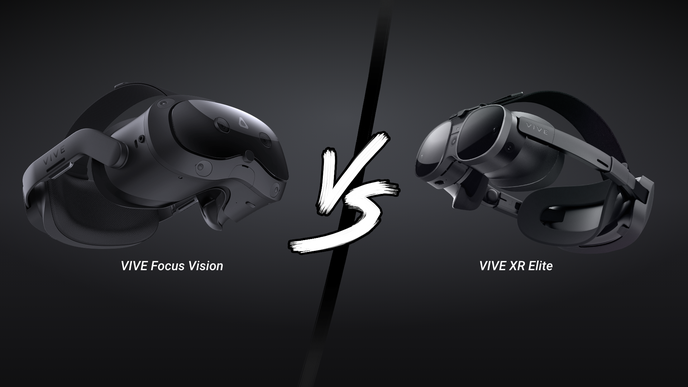Wearable technology has become a driving force in global markets, creating a surge in the popularity of VR glasses and similar devices.
The VR industry is at the forefront of technological advancements, with benefits to modern society in education, healthcare, and more.
VR headsets and accessories have continued their steady evolution, becoming increasingly powerful by including more advanced components and features in their hardware — but all this power can cause headsets to be bulky, disrupting immersion for the people wearing them.
Enter VR glasses, which emphasize miniaturization, the act of downsizing and fitting more technology with less volume, thus reducing the weight and size of a product. VR glasses are a version of VR headsets that are less restrictive on physical movements. They prioritize comfort and usability over graphics and performance.
VR glasses also offer a lightweight form factor that delivers fully immersive and interactive experiences yet can be easily worn like a pair of spectacles. Two prime examples of VR glasses are the VIVE Flow and the VIVE XR Elite.
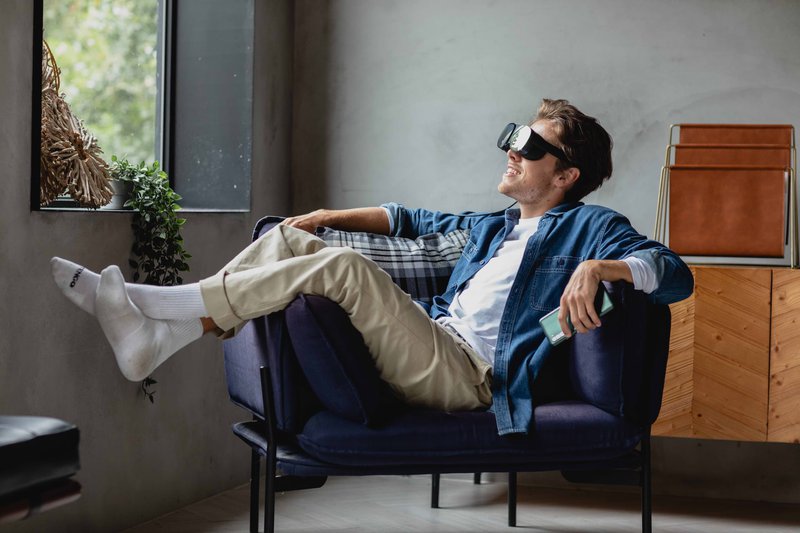 VR glasses like the VIVE Flow are perfect for casual enjoyment!
VR glasses like the VIVE Flow are perfect for casual enjoyment!
VR glasses are noteworthy for giving users easily immersive experiences in environments where traditional VR solutions would be impractical.
Groundbreaking technology is hard to find, and understanding how it works can be harder. This article will help you do both, showing you the most immersive and comfortable VR choices and highlighting the key features of VR, AR, and smart glasses.
How are VR glasses used?
VR has extremely diverse uses, from letting you kayak through the Arctic in the comfort of your living room, to enabling doctors to improve their craft with simulated surgeries. However, some VR use cases require heavy-duty hardware and special software, as with professional flight simulations, tactical training, or police training programs.
 Stay warm and cozy while immersed in an Arctic adventure surrounded by ice-cold water.
Stay warm and cozy while immersed in an Arctic adventure surrounded by ice-cold water.
While traditional VR glasses may not be able to handle graphics-intensive content, newer models like the VIVE XR Elite can be connected to a computer to harness its resources and seamlessly run PC VR games and more.
VR glasses are generally designed to handle lighter content efficiently, though, providing a seemingly weightless and fully comfortable virtual reality experience. Let’s dive into more examples of how VR glasses are used!
Screen mirroring
Among the most appealing uses for VR glasses are streaming videos and browsing social media on a personal theater-sized screen right in front of your eyes. VR glasses can provide a quick and easy way to mirror your phone or laptop screen in VR and enjoy the content that you want. The optimal choice for when you’re on a long flight or just don’t want to get out of bed!
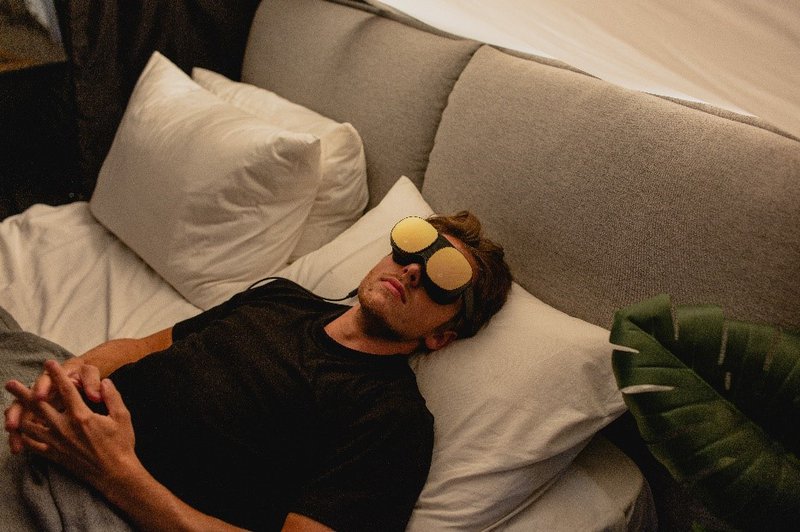 You can also lie in bed and watch your favorite movies and videos to relax before going to sleep.
You can also lie in bed and watch your favorite movies and videos to relax before going to sleep.
Work
VR glasses are great for remote work and collaboration. Their light frames and small form factors provide an easy way to jump in and out of VR sessions with your business partners or co-workers without slowing down your movements. That means more productivity and fewer distractions.
Gaming
All work and no play make for a dull day! VR glasses are easy to pop on, allowing you to enjoy games from anywhere, at any time. Gaming was transformed with the introduction of portable devices (i.e., handheld consoles), and having all you need for immersive gaming in a single pair of glasses may be the next big transformation.
As mentioned, some VR glasses like the VIVE XR Elite even support PC streaming, which can give you the best of both worlds — lightweight portability and heavy-duty PC VR gaming.
Wellness
The unique size, weight, and structure of VR glasses also make them ideal for meditation and mindfulness. You can mellow out and remove yourself from daily pressures with immersive seminars and meditation sessions in picturesque mountaintops and forests.
While podcasts are an easy way to relax, and a VR headset can virtually transport you to whole other worlds, VR glasses offer the perfect balance between comfortable visuals and relaxing audio, letting nothing take you out of your zen state.
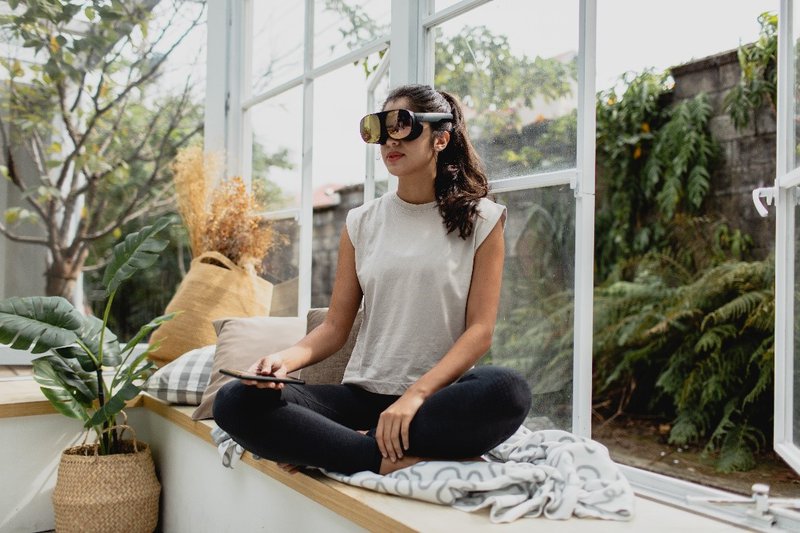 Practice mindfulness with relaxing tunes and immersive visuals.
Practice mindfulness with relaxing tunes and immersive visuals.
Challenges in VR glasses technology.
VR glasses work by adopting the core technology behind VR headsets, providing two separate displays for each eye that work together to form a 3D super-image. This is called stereoscopic display, and it is the foundation of the VR experience.
However, delivering two images together was just the first hurdle for VR tech. Here are other challenges that the VR industry faces:
Weight
As mentioned before, high performance often requires heavy hardware, and heavy isn’t immersive. This means that the processors, batteries, and lenses need to be made lighter to keep up with the physical requirements that a VR headset has — i.e., it must offer quality performance while also being comfortable enough to wear.
Price
The sophisticated hardware needed for high-performance VR requires substantial investments to develop. Massive amounts of resources are being pooled into researching, designing, and manufacturing VR headsets. The hefty price tag on developments has a substantial effect on VR development and limits the steps that can be taken to advance VR technology.
Screen-door effect
Every screen is made up of pixels, and the more there are, the clearer the picture on it can be. Since getting those pixels small is a hard thing to do, it’s sometimes possible to see black borders around pixels, which can break immersion. This is called the screen-door effect, and it’s magnified in VR due to the display screens being so close to each eye. Thankfully, this issue is being improved in newer VR devices with the increasing pixel density of their displays.
Light leakage
Light leakage from outside is detrimental to the VR glasses experience. If not properly blocked, rays of light, known as god rays, can refract off the lenses and disrupt your vision.
Making the inside of VR headwear “outside proof” is a challenge for the VR industry. Different lens designs, like those of the pancake lenses on the VIVE Flow and the VIVE XR Elite, have drastically decreased potential disturbance from god rays.
VR glasses, AR glasses, and smart glasses — what are the differences?
In addition to VR glasses, other forms of digital eyewear have also gained popularity. These include augmented reality glasses and smart glasses.
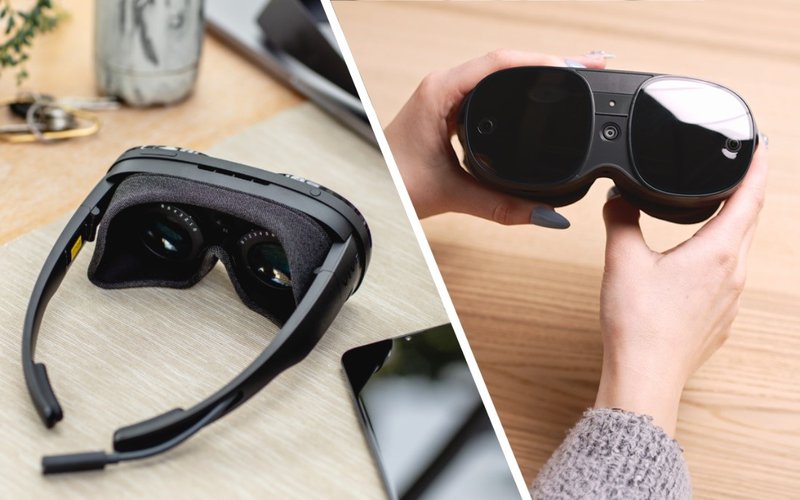 VIVE Flow (left) and VIVE XR Elite (right) offer captivating immersion in different ways.
VIVE Flow (left) and VIVE XR Elite (right) offer captivating immersion in different ways.
Smart glasses are digital wearable devices that present information to the wearer as an extension of another device (e.g., a phone, laptop, etc.) via an augmented reality heads-up-display (HUD). Similar to smart watches, they can display useful information like text messages and navigational directions.
Smart glasses achieve this by layering a physical, transparent screen before the lenses, projecting the information over the world around you. This lets you continue to be fully aware of your surroundings while providing you with additional data.
AR glasses go a step further by supplying information as a standalone device that does not need another device for assistance — as opposed to smart glasses, which need another device to feed the eyewear content to project.
Instead of simply presenting directions to a restaurant given by an app on your phone, for example, AR glasses may provide you with live updates on restaurant ratings and closing times without the assistance and data of another device. They allow you to add digital elements to your real-world view, effectively enhancing the environment around you.
However, these features require advanced software and very powerful hardware. Fitting all the components needed for interactive AR experiences (i.e., mixed reality experiences) into a normal-looking pair of glasses is not yet feasible, as current hardware and software cannot be compacted into that small of a form factor. Devices referred to as AR glasses are essentially a kind of smart glasses.
VR glasses vs. smart glasses: Which are better?
Comparing VR glasses to smart glasses is like comparing apples to oranges, as both kinds of glasses have different features and use cases.
VR glasses are a kind of independent product that works by itself. You can start your meditation or join a work meeting by simply putting them on without any other piece of technology. Smart glasses, however, are extensions of your mobile, tablet, or laptop. They cannot typically run apps on their own — they are simply an extra screen for your eyes.
Ultimately, the question of which kind of glasses is better comes down to what functions you’re looking for. If you want a trendy pair of smart sunglasses that show you real-time directions when walking, then futuristic-looking VR goggles may not be the best choice for you. However, if you want a comfortably immersive VR experience that gives you access to games, meditation, or casual entertainment, then VR glasses like the VIVE Flow are definitely worth exploring.
 VR glasses are a fun and interactive device to enjoy with your friends and family!
VR glasses are a fun and interactive device to enjoy with your friends and family!
What about VR glasses vs. AR glasses?
Virtual and augmented reality both offer very different kinds of experiences, and the experience that’s best for you is largely a matter of preference. There’s a device, however, that bridges that gap between VR glasses and true AR glasses — the VIVE XR Elite — a lightweight and comfortable headset with a convertible form factor.
Although not an AR headset, VIVE XR Elite’s mixed reality passthrough allows you to interact with both the physical and virtual world. And by replacing its battery cradle with a portable power bank, you can switch VIVE XR Elite from headset form to glasses form, unlocking a new kind of experience — that of extended reality glasses!
Find out what else you can do with VIVE XR Elite.
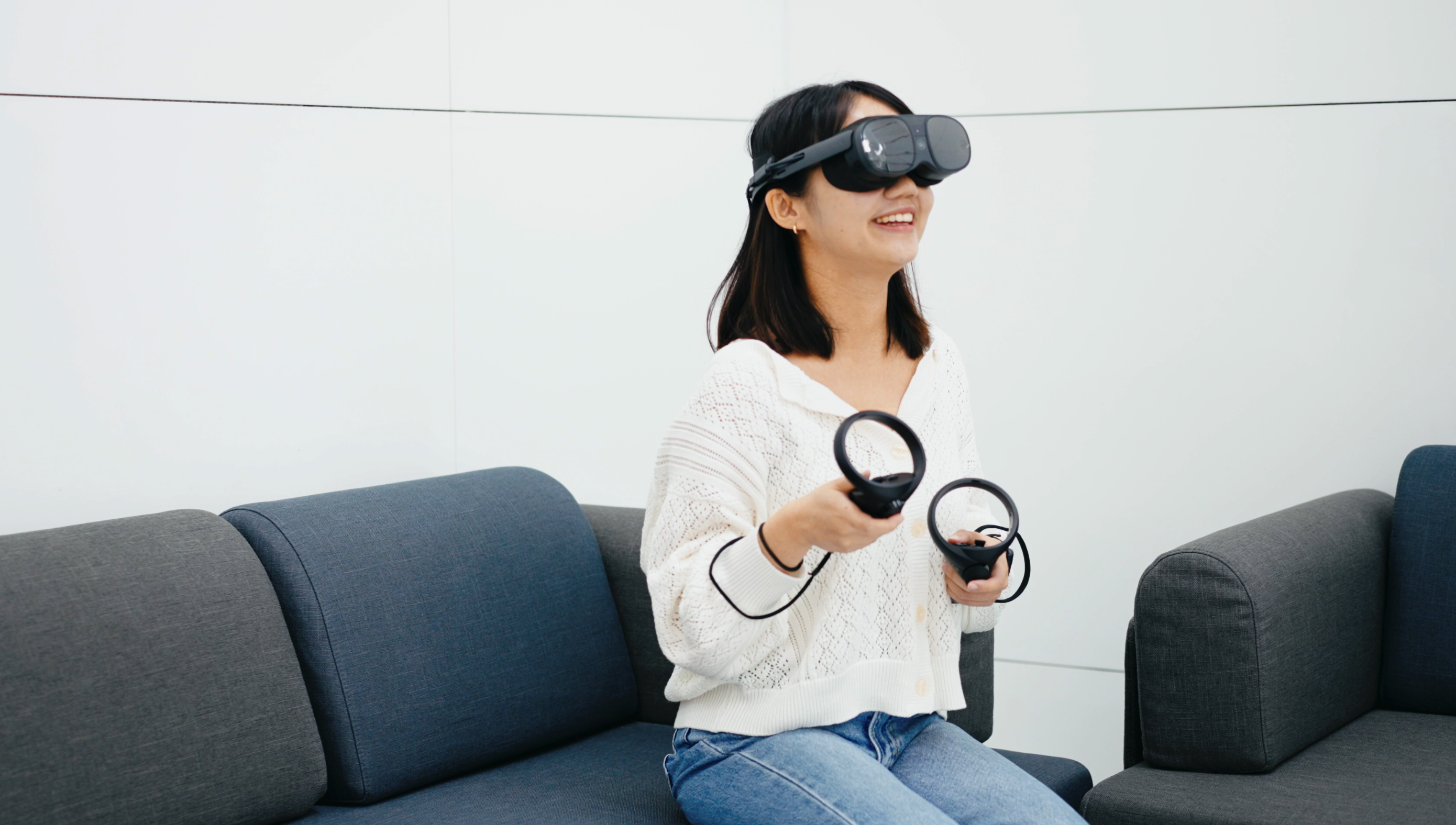

 Stay warm and cozy while immersed in an Arctic adventure surrounded by ice-cold water.
Stay warm and cozy while immersed in an Arctic adventure surrounded by ice-cold water.  You can also lie in bed and watch your favorite movies and videos to relax before going to sleep.
You can also lie in bed and watch your favorite movies and videos to relax before going to sleep.  Practice mindfulness with relaxing tunes and immersive visuals.
Practice mindfulness with relaxing tunes and immersive visuals.  VIVE Flow (left) and VIVE XR Elite (right) offer captivating immersion in different ways.
VIVE Flow (left) and VIVE XR Elite (right) offer captivating immersion in different ways.  VR glasses are a fun and interactive device to enjoy with your friends and family!
VR glasses are a fun and interactive device to enjoy with your friends and family! 